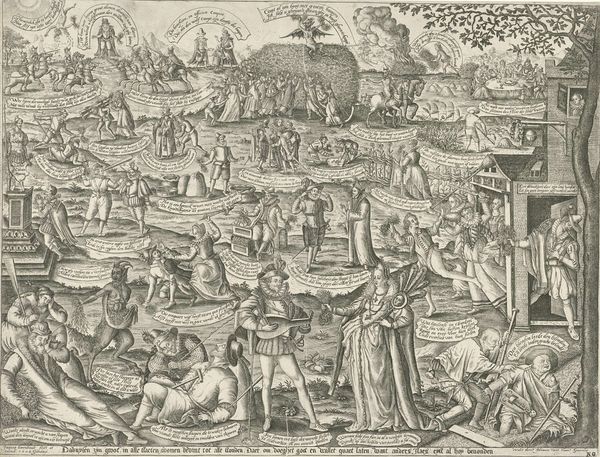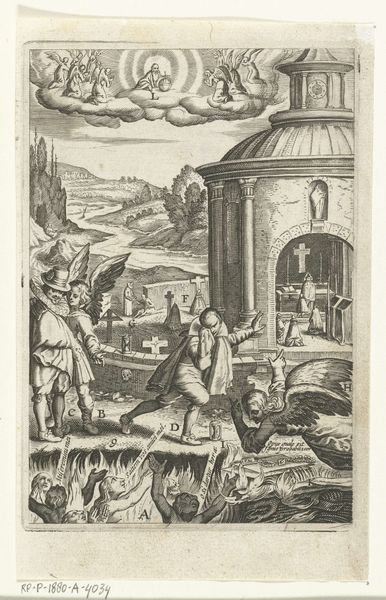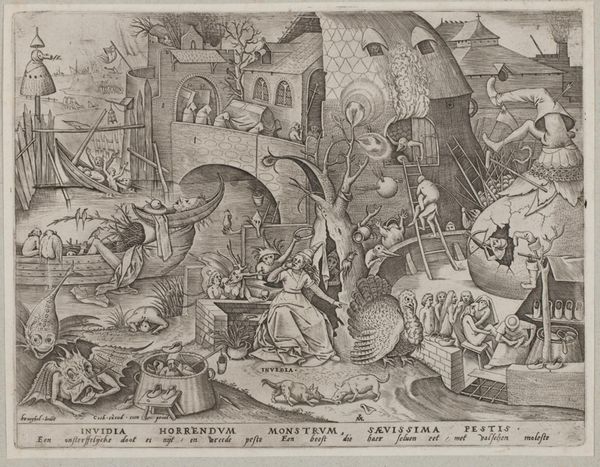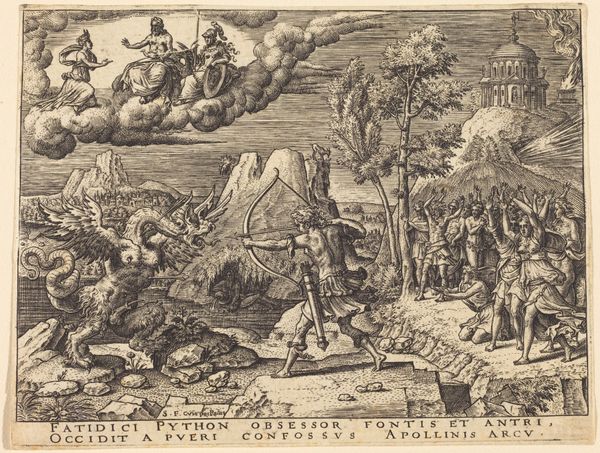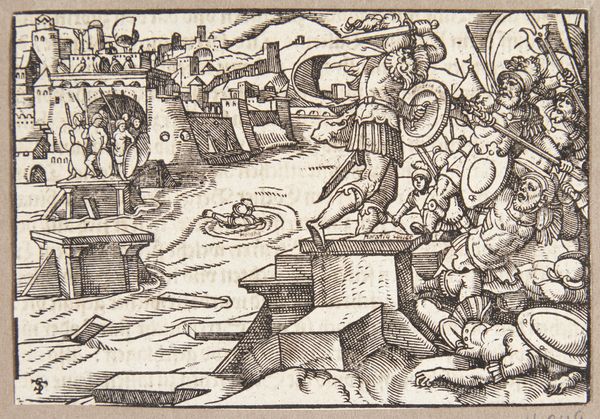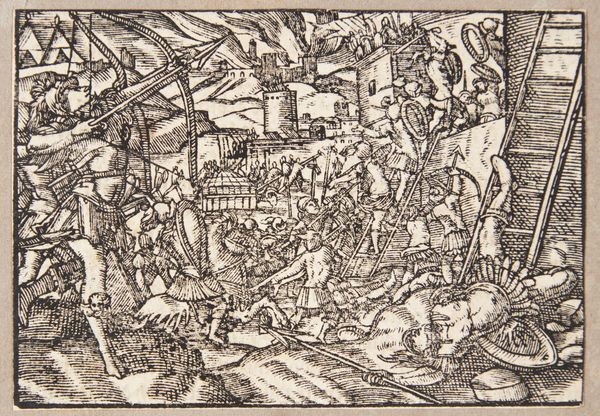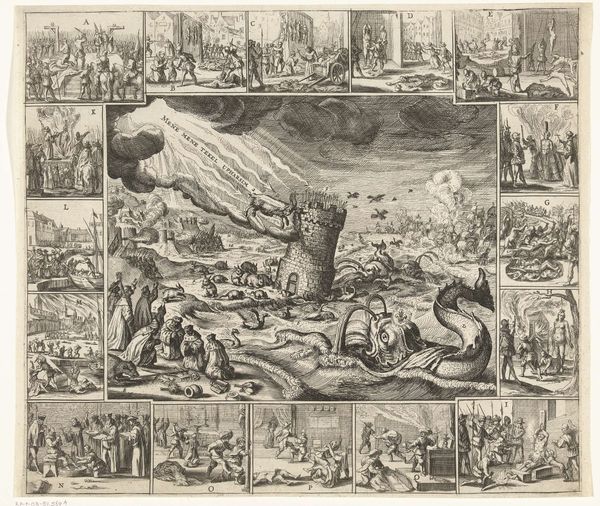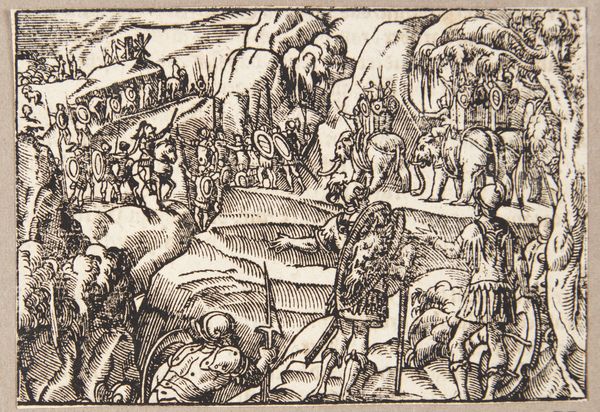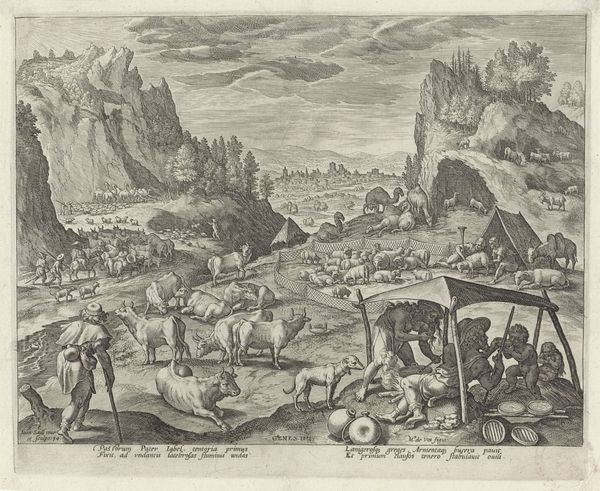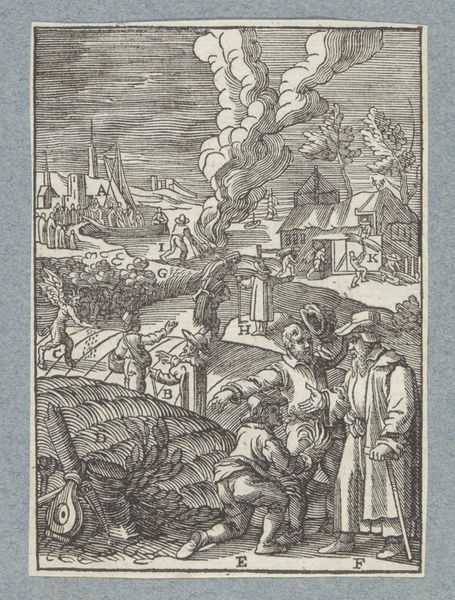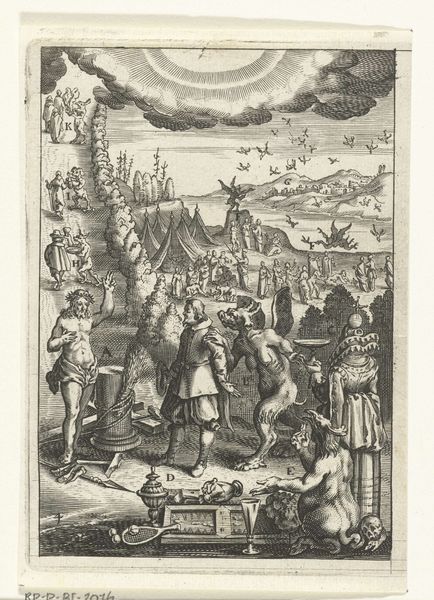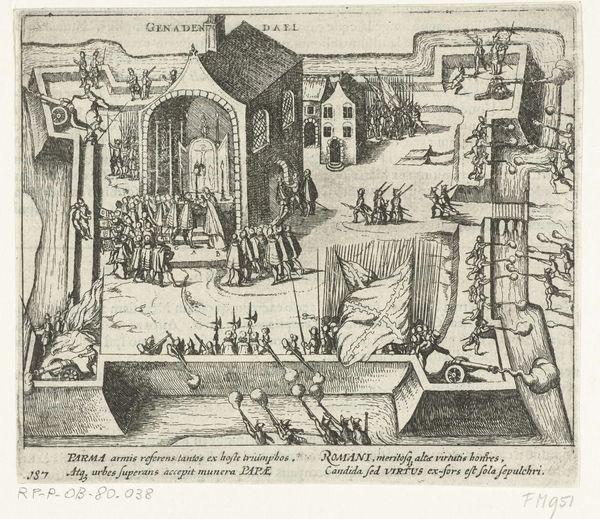
drawing, print, ink, engraving
#
drawing
#
pen drawing
#
dutch-golden-age
# print
#
pen illustration
#
pen sketch
#
landscape
#
ink line art
#
ink
#
cityscape
#
genre-painting
#
history-painting
#
engraving
Dimensions: height 111 mm, width 157 mm
Copyright: Rijks Museum: Open Domain
Editor: This is "Kamp van de Nederlanders op Mauritius, 1598", made sometime between 1600 and 1649 by an anonymous artist. It's an ink and engraving print displayed at the Rijksmuseum. It depicts what looks like Dutch settlers constructing a camp. It seems like everyday life focused on fishing and building is the theme. What do you see in this piece that I might be missing? Curator: As a materialist, I am drawn to the process of creating this print, and the materials used. Consider the social context: this isn't just a pretty landscape, it's a visual record of colonization, constructed with ink, paper, and, importantly, the labor of the engraver. Editor: The "labor of the engraver," could you explain? Curator: Absolutely. Look at the repetitive lines, the meticulous detail. This print would have been mass-produced. So, who was this artist? How were these prints disseminated? Were they used to promote further colonization, feeding into a cycle of resource extraction and consumption? This image, and its production, contributed to a specific worldview. Editor: So, you’re less interested in the scene itself and more in how the print was made and what purpose it served within the colonial project. It really emphasizes the making and its connection to labor. Curator: Precisely. Consider it as a manufactured object intended for widespread consumption. Editor: I've always seen art through the artist’s vision. You've made me rethink this perspective. I guess that’s a far broader lens through which to see any piece of art, not only for this drawing, I should really be focusing on process and impact.
Comments
No comments
Be the first to comment and join the conversation on the ultimate creative platform.
